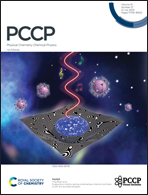Selective capacitive removal of Pb2+ ion contaminants from drinking water via nickel foam/Mn2CoO4@tannic acid-Fe3+ electrodes
Abstract
The health hazards caused by low concentrations of Pb2+ ions in drinking water systems are of significant concern. In order to remove Pb2+ ions and retain Na+, K+, Ca2+ and Mg2+ as harmless competitive ions without simultaneous removal, nickel foam (NF)/Mn2CoO4@tannic acid (TA)-Fe3+ electrodes were prepared by a hydrothermal method and a coating method and an asymmetric capacitive deionization (CDI) system is established using the prepared electrodes and a graphite paper positive electrode. The designed asymmetric CDI system exhibited a high Pb2+ adsorption capacity of 375 mg g−1 with high removal efficiency and significant regeneration behavior at 1.4 V at neutral pH. When the asymmetric CDI system is used to enrich a hydrous solution of mixed Na+, K+, Ca2+, Mg2+ and Pb2+ ions each with a concentration of 10 ppm and 100 ppm by electrosorption at a 1.4 V operating voltage, the removal rate of Pb2+ is as high as 100% and 70.8% respectively, and the relative selectivity coefficients are 4.51–43.22. According to the different adsorption mechanisms of lead ions and coexisting ions, the separation and recovery of ions can be realized by a two-step desorption process, thereby providing a new method for removing Pb2+ ions from drinking water with excellent application potential.



 Please wait while we load your content...
Please wait while we load your content...